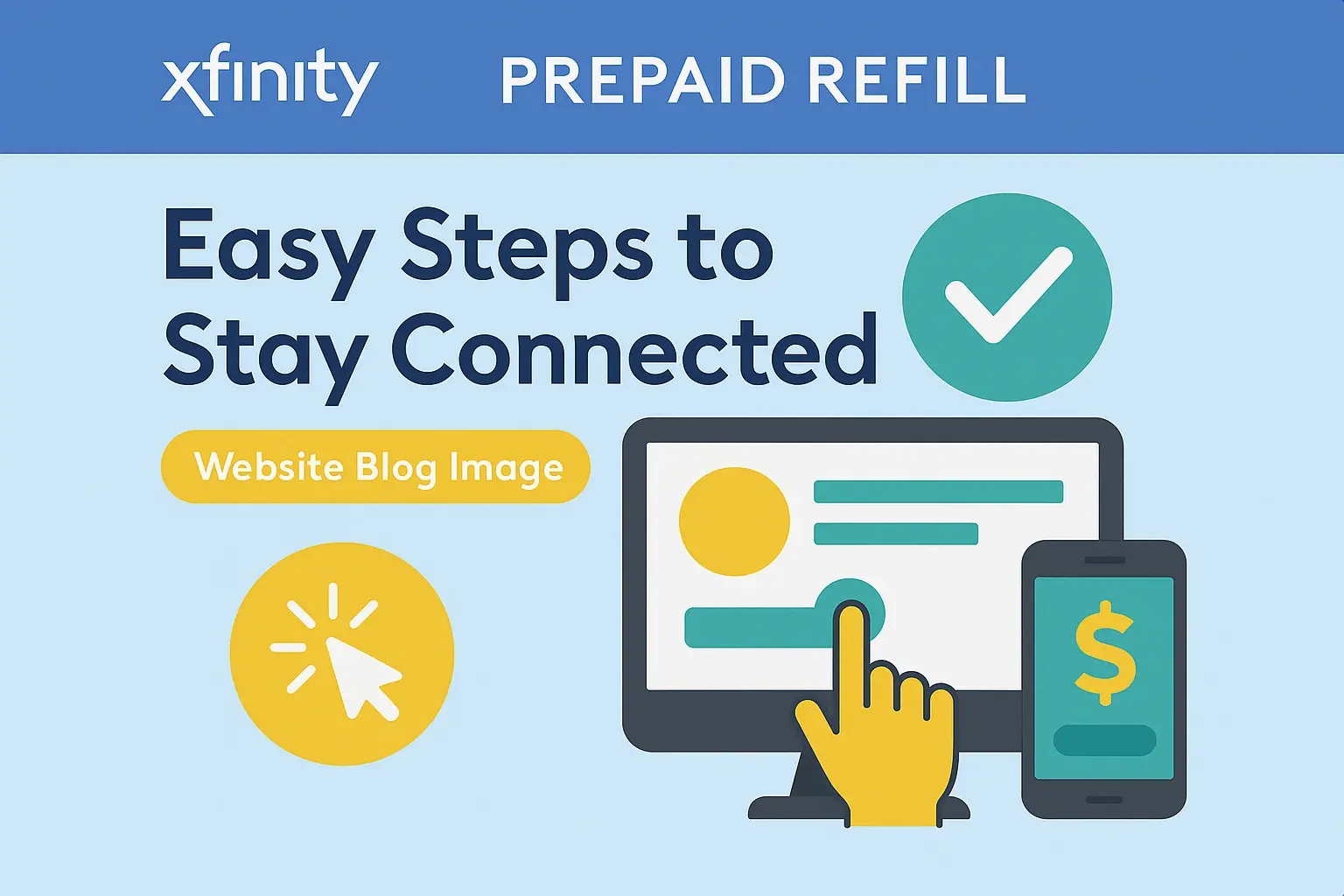Xfinity Modem Disconnecting: How to Fix the Issue

Are you having trouble with your Xfinity internet? Is your Xfinity WiFi losing connection? You are not alone. Many people face issues with their Xfinity modem. These disconnections can interfere with how you use the internet. There are many reasons for this issue. Some might be small glitches, while others could be more serious network problems. This blog will help you find the possible causes of Xfinity modem disconnections. We will also share some good solutions so you can return online quickly.
Understanding the Root Causes of Xfinity Modem Disconnections
Before we look at the solutions, it's good to know the common reasons for Xfinity modem disconnections. Finding the main issue can help you save time and effort when fixing the problem.
The reasons can include outside factors like internet service outages and signal interference. They can also include problems such as outdated firmware, a crowded network, or a modem that does not work well. Let's take a closer look at some of these issues.
Signal Interference and Its Impact on Connectivity
One common reason for Xfinity modem disconnections is signal interference. This happens when outside devices weaken the signal between your modem and the network.
Several electronic devices can cause problems. Cordless phones, microwaves, and nearby Wi-Fi networks can send out signals that mess with your Xfinity WiFi signal. Also, thick walls and furniture can block the signal, making it harder to stay connected.
To fix this, check for things that could cause interference. Place your modem away from these devices to help improve your connectivity.
The Role of Overloaded Networks in Connectivity Issues
An overloaded network is a common reason for Xfinity modem disconnections. When many devices use your internet connection at the same time, especially for heavy tasks like streaming or gaming, your network can struggle. This can lead to network breakdowns and connectivity issues.
Every device on your network uses some of your total bandwidth. If too many devices are connected, it can create congestion. This makes the internet slower and may cause disconnections.
To improve your situation, try finding and disconnecting devices that you are not using. This can help free up bandwidth and may fix disconnection problems.
Initial Troubleshooting Steps for a Disconnected Xfinity Modem
Now that you know some possible causes, let's go over some quick tips that can help you fix Xfinity modem disconnections. These first steps are easy and can help you avoid more complicated solutions.
Sometimes, checking the lights on your modem and router is a quick fix. Other times, just doing a power cycle can bring your internet connection back. Let’s take a closer look at these steps.
Verifying Modem and Router Lights for Proper Functioning
Your Xfinity modem and router have LED lights. These lights show their status and any issues. When you have disconnection problems, check these lights first.
A solid green light on your Xfinity modem usually means a good internet connection. If the light is blinking or off, there is a problem. For your router, find a solid light on the internet or online indicator.
If you see any strange lights, check your device manuals or the Xfinity support website. They offer troubleshooting help for your specific model. This quick check can often help you find the problem.
Performing a Power Cycle on Your Xfinity Equipment
Power cycling, or restarting, your Xfinity equipment is a simple way to fix small problems. These issues can cause disconnections. Just like a computer, your Xfinity gateway needs a refresh sometimes.
To power cycle, first, unplug both your modem and router from the outlet. Wait for at least 30 seconds. This lets the devices clear any temporary issues or errors in their memory.
After waiting, plug in the modem first. Then, plug in the router. Give them a few minutes to start up fully. Test your internet connection once all the lights are stable to check if the power cycle fixed the disconnection problem.
Advanced Solutions to Prevent Xfinity Modem Disconnects
If the first troubleshooting steps don't work, you may need to check some advanced solutions. These options focus on issues in your modem's settings or network setup. They can help make your internet connection more stable and reliable.
Don't be worried by the word "advanced." The steps below are easy to follow. They can greatly improve how well your Xfinity internet connection works.
Updating Your Modem's Firmware to Enhance Stability
Your Xfinity modem has firmware, the same as that of your computer or smartphone. This kind of program facilitates its proper operation. Older firmware could cause issues, including disconnecting from the internet.
Usually, you have to log into the settings of your modem using a web browser to check and apply updates for your firmware. Your modem model will determine the steps involved. Your user manual or the Xfinity support page has the particular instructions.
The newest repairs and enhancements will come from turning on automatic updates in the settings of your modem. This maintains a consistent internet connection. If you have a new modem, it most certainly requires a firmware upgrade to run as intended.
Adjusting the Wi-Fi Channel to Avoid Interference
Your Wi-Fi router sends signals using channels within the 2.4 GHz and 5 GHz bands. If there are many networks near you using the same or close channels, you may experience interference. This can cause your signal to drop and disconnect. Luckily, you can fix this by changing to a channel with less traffic.
To change your channel, go to your router settings using a web browser. Look for the Wi-Fi or wireless settings option. You will see a way to change the channel. For the 2.4 GHz band, channels 1, 6, and 11 are usually the least busy. If you do not know which channel is best, some routers can automatically choose the best channel for you based on current conditions.
Also, newer Wi-Fi standards like Wi-Fi 6 have better ways to use channels effectively. This reduces the chance of interference. If you often have problems with your Wi-Fi channel, think about upgrading your router.
When to Contact Xfinity Support for Modem Disconnection Issues
While the troubleshooting steps above can fix many Xfinity modem disconnection problems, some cases need help from Xfinity support. Knowing when to ask for help can save you time and reduce frustration.
If you have tried troubleshooting and still have issues, or if the problem might be a service outage in your area, contacting Xfinity support is a good idea.
Identifying Issues That Require Professional Support
Here are a few situations where it’s best to contact Xfinity support:
- Suspected Service Outage: You should first call Xfinity support should you believe your area is experiencing a service outage. They can look for outages and projects when the restoration of services starts.
- If you have tried all the troubleshooting techniques in this article—power cycling, connecting checks, firmware updates—and things still are not working, you most likely require expert assistance.
- Call Xfinity support if you believe your modem or coaxial cable is physically broken or not performing as advised for assistance with repairs or replacements.
Preparing Information Before Contacting Customer Service
To get the best help from Xfinity customer service, prep some important info first. It will make your experience smoother.
- Secure the Xfinity account number and service-linked phone number for quick reference.
- Modem and Router Details: Write down the brand and model of your Xfinity modem and router, along with their serial numbers. The markings for device identification appear as a sticker, which you can locate underneath or on the rear section.
- Summarize all previous troubleshooting attempts that you conducted. Providing this information to the support agent enables them to quickly understand the situation while avoiding further questions about it.
You can reach Xfinity support in different ways, such as by phone, through live chat on the Xfinity website, or by messaging in the Xfinity app.
| Contact Method | Availability | Description |
| Phone | 24/7 | Talking with a support agent gives you real-time help and guidance. |
| Live Chat | Usually during business hours | Live chat is a good choice for those who like texting their support. |
| Xfinity App | Usually during business hours | The Xfinity app helps you manage your account, troubleshoot, and contact support all in one place. |
Conclusion
To sum up, in our digital environment, we need a robust and consistent internet connection. Knowing the causes of your Xfinity modem's disconnection and using the provided troubleshooting techniques will help you increase its stability. This might include adjusting Wi-Fi channels, upgrading the firmware, or handling signal interference. These actions will enable you to prevent future issues. See Xfinity support if you still run into problems. Maintaining a pleasant online experience for all your internet requirements depends on your modem operating as it should.
Faq
1. Why does my Xfinity modem keep disconnecting?
Your Xfinity modem may keep disconnecting due to several factors, such as a weak Wi-Fi signal, faulty or loose coaxial cables, outdated modem firmware, interference from other devices, or too many connected users overwhelming the bandwidth. In some cases, a temporary service outage or maintenance work in your area may also be responsible for the intermittent connection.
2. How can I check if the problem is with Xfinity's network?
To determine if the issue is on Xfinity’s end, you can visit the official Xfinity Status Center through their website or use the Xfinity mobile app. These tools can show whether there's a known service outage in your area. Alternatively, you can contact Xfinity’s customer service to ask about network issues or scheduled maintenance that might be affecting your connection.
3. What’s the first thing I should do when my modem disconnects?
If your modem starts disconnecting, the first step is to reboot it. Unplug it from the power source, wait about 30 seconds, and then plug it back in. This often resolves temporary glitches. You should also inspect all physical cable connections to ensure they are secure and undamaged. If you’re using Wi-Fi, try moving your modem to a more open or central location in your home to improve signal strength.
4. Can outdated firmware cause disconnects?
Yes, outdated firmware can lead to frequent disconnections, as it may lack critical updates that improve performance or fix bugs. Most Xfinity modems update automatically, but if you’re using your own third-party device, it’s important to check with the manufacturer for any available firmware updates and apply them manually if needed.
5. How do I know if my modem or router is the problem?
If rebooting doesn’t help and your internet still drops, the modem or router could be at fault. You can try connecting directly to the modem via Ethernet to see if the problem persists, which can help isolate whether the issue is with the modem or the wireless router. If the issue continues even with a direct connection, your modem may be failing or incompatible with your current internet speed plan and might need replacement.





